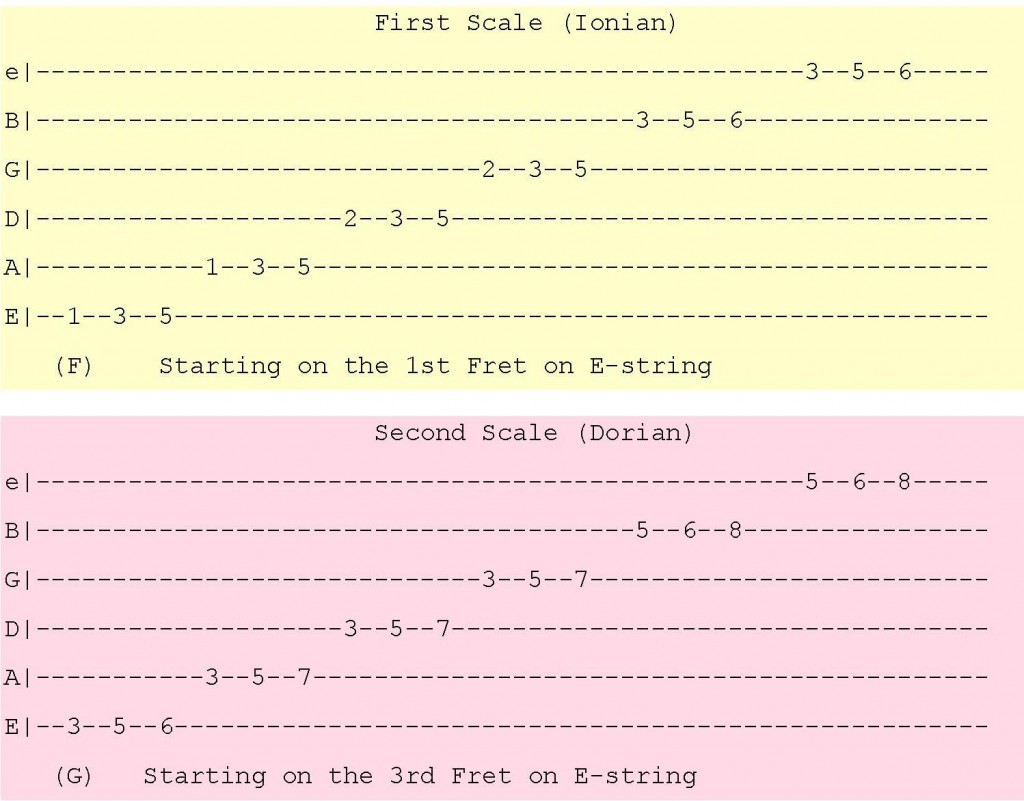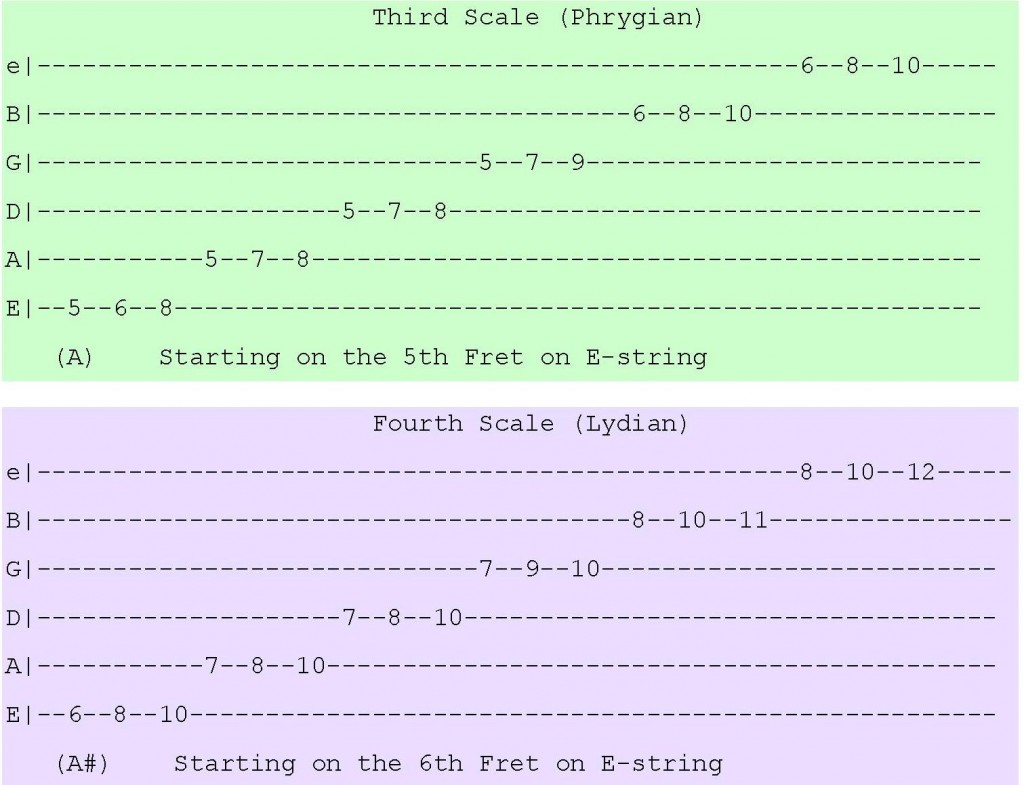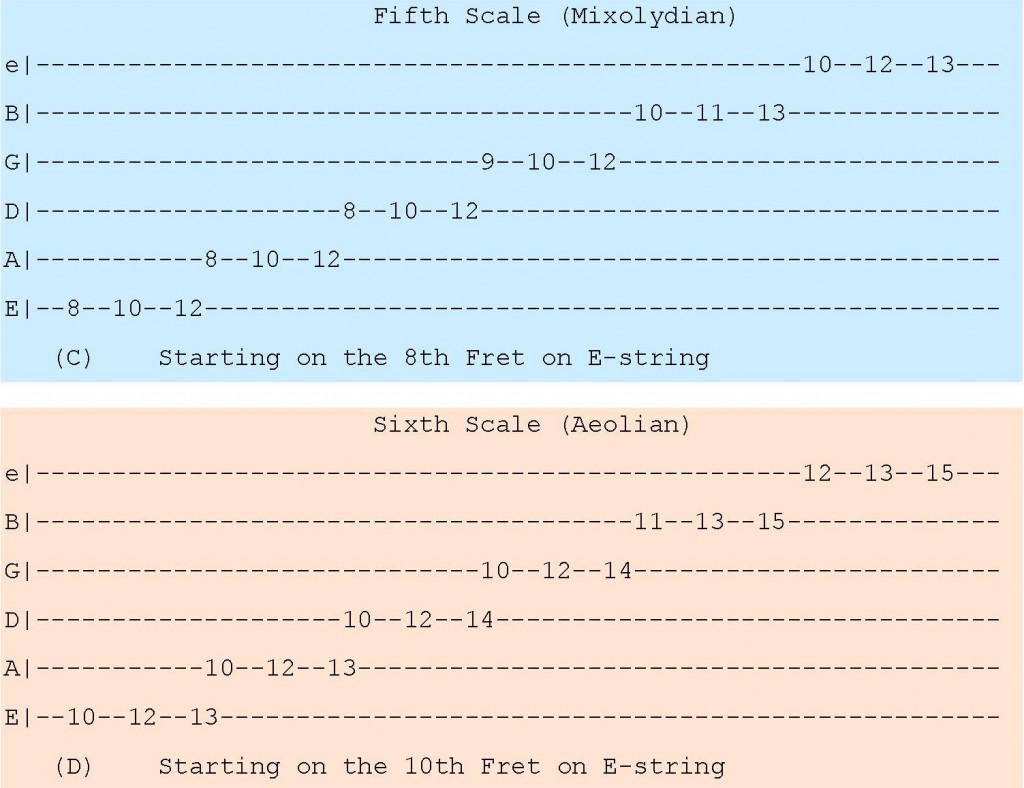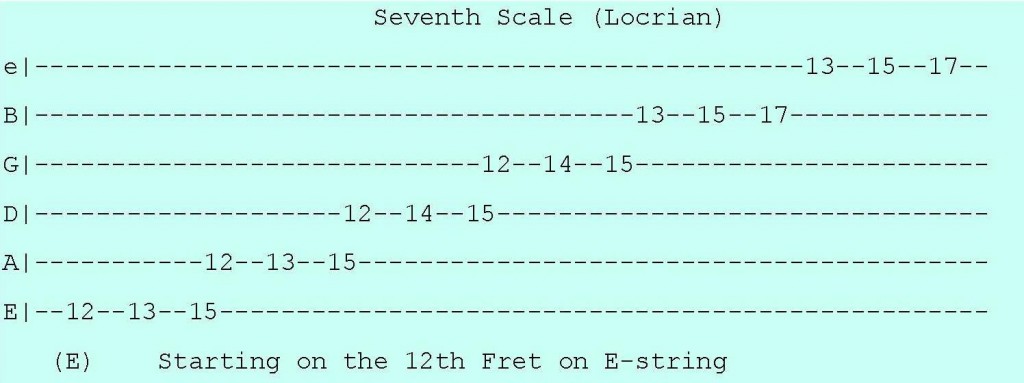This trick will change the way you play guitar
Learn the scales “by ear” in a few minutes.
Notice: You do not need any extensive foreknowledge to comprehend this tutorial, but if you are seeking to start it all from scratch, you may need to visit this page first.
Before studying any theory, test these fingerings/patterns (7 main scales) and discover how alike they sound.
It is initially not necessary to remember the positions. Practice by ear, if you press the wrong key you would realize it immediately, that all these scales sound alike!
And the shapes are easy to remember.
(Note: We start from the F major scale to better remember the shape, as shown on the bottom below)
3-note-per-string fingering patterns for the modes of the Major Scale
We call these scales: “The 7 Modes of the Major Scale“
The first seven letters of the alphabet ABCDEFG represent a musical scale whose steps vary from 1 Tone to 1/2 Tone, according to the following scheme:
- Between A and B: 1 Tone
- Between B and C: 1/2 Tone
- Between C and D: 1 Tone
- Between D and E: 1 Tone
- Between E and F: 1/2 Tone
- Between G and A: 1 Tone
- Between A and B: 1 Tone
If we start from the C letter (step 3.) we get a differnt sequence (T – T – s – T – T – T – s). This is the Major scale (s = 1/2T or semitone)
Modes are scales which can be derived from the intervals of the Major Scale.
If we start from the next step (4.) we get T – s – T – T – T – s – T
This sequence sounds different. The name is “Dorian scale”, etc.
The 7 modes of the major scale are:
1. C Ionian (Major) = C D E F G A B
2. D Dorian = D E F G A B C D
3. E Phrygian = E F G A B C D E
4. F Lydian = F G A B C D E F
5. G Mixolydian = G A B C D E F G
6. A Aeolian = A B C D E F G A
7. B Locrian = B C D E F G A B
Each scale is obtained from the scheme of the major scale (T – T – s – T – T – T – s) but starting from different steps
- The first exercise at the top shows the F major scale: F Ionian. It is called also “major” as the sequence is laid as such T – T – s – T – T – T – s. F major or F Ionian as it starts from F.
- In the second exercise the sequence is as such: T – s – T – T – T – s – T. This is the Dorian scale. Named D Dorian if it starts from D, G Dorian if starts from G etc.
The sequence of the intervals gives the name to the scale
All the scales in the example have the same sound. All of them repeating the same notes of the F major scale.
This means that we can play the F major scale in 7 different ways. If we remember this scheme of notes we can improvise a song on F major on every part of the keyboard!
G Dorian (the second exercise) can be used for a song in the key of F major, but not for example F Dorian, as it sounds different!
Practice (uncomplicated as they all sound the same). The notes have a symmetry that is easy to remember visually, unlike the scales from usual lessons that will often seem confusing.
Content:
Part 1 The 7 Modes of the Major scale
Part 2 How to Improvise
Part 3 Fretboard and mood of the Modes
Part 4 Backing Tracks to practice

Discover the latest musical instruments on our music website on Amazon!
Explore the latest musical instruments on Amazon music store and support our channel at no extra cost to you! By purchasing any musical instrument through our affiliate link, you not only get top-quality gear but also contribute to our channel's growth and content creation.

 Join our Telegram group: Band in a Box Backing Tracks.
Join our Telegram group: Band in a Box Backing Tracks.
 Join our Facebook group (download/share backing tracks): SGU BackingTracks
Join our Facebook group (download/share backing tracks): SGU BackingTracks







Enjoying these lesson thank you for sharing all this valuable information you are the rock star teacher thanks again
Jimmy D
Thank you
Thank you, Jimmy